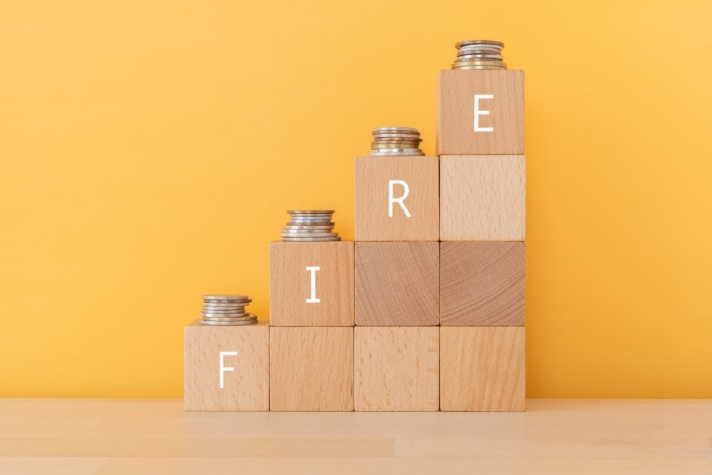FIRE stands for Financial Independence, Retire Early. It is a concept that has been highly popular since the 2010s. It is basically a financial lifestyle movement focused on aggressively saving, investing, and cutting expenses to retire much earlier than the traditional retirement age of 65 to 70.
The core idea is to accumulate enough wealth so that passive income from investments covers your daily living expenses. And, you can decide to leave your job decades earlier, even in your 30s. However, it does require active financial tracking, budgeting, and strategic savings, leaving the impression that it’s not for everyone.
To understand whether it’s for you or not? And, how to execute FIRE in real life without compromising your current comfortable lifestyle, keep reading this article till the end.
Understanding Financial Independence and Retire Early (FIRE)
Traditional retirement planning typically involves working until age 65 or later. By that time, you rely on employer pensions or Social Security benefits to cover your expenses.
FIRE, by contrast, demands much higher savings rates and earlier investment to retire decades sooner. It involves a disciplined approach to money management, emphasizing:
- Extreme frugality to reduce expenses without sacrificing quality of life.
- Savings rate as high as 60% or more of income.
- Strategic investing in low-cost index funds, ETFs, and real estate to grow wealth.
For solopreneurs and freelancers, FIRE is especially relevant because their income can be variable and unpredictable. Achieving financial independence provides the freedom to choose projects, reduce financial stress, and pursue passion projects without the pressure of needing a steady paycheck.
What Are The Benefits of Achieving Early Financial Independence

The major benefit of achieving financial independence early is that you get to buy your time back. You can invest your time in things that truly matter to you instead of spending most of it in an office cubicle. Some other benefits include:
- To work on your own terms or retire from traditional employment entirely.
- Knowing your expenses are covered by passive income, satisfaction and peace of mind increase.
- Without financial pressure, you can invest time and resources into ventures aligned with personal interests
Key Principles Behind the FIRE Movement
You spend less, save, and then strategically invest the savings in a diversified portfolio. It’s truly as simple as that. But if we want to divide this concept into key principles, here’s what you get.
- Extreme Frugality: Cutting unnecessary expenses while maintaining a good quality of life. This means prioritizing spending on what truly adds value to your life (education, training, etc) and eliminating waste.
- High Savings Rate: Saving 50% or more of income accelerates wealth accumulation. The higher the savings rate, the fewer years needed to reach financial independence. Here’s a short chart that will help you estimate how much to save.
| Savings Rate | Years to FIRE (approximately) |
| 10% | 51 years |
| 25% | 32 years |
| 50% | 17 years |
| 60% | 13.5 years |
| 70% | 9 years |
- Strategic Investing: Now that you have saved up, find out investment opportunities that are tailored for your needs. Without proper investment strategies, your sacrifices will go vain. Build wealth through diversified, low-cost investments such as index funds, ETFs, and real estate.
How To Calculate Your FIRE Number
The first step of calculating your FIRE number is to understand how much you spend and where you spend. Since FIRE promotes extreme saving and frugality, many people choose to cut down their spending on things they don’t necessarily need (tours, vacations, luxury products, etc).
Just remember to be realistic when you are doing so. After all, you do have a lifestyle to maintain. Keep track of how much you spend on health, home, or car insurance annually and add those to your living costs to get the full picture.
Then there’s this very popular 25X or 4% formula that can easily calculate how much you need to invest to retire early. Here’s how it goes.
Annual Expense x 25 = Minimum Investment Amount In Your Portfolio To Achieve FIRE
Suppose your expenses are around €50,000 (annual). And, considering you might have other wants like travelling, purchasing luxury items, etc, you are allowed to withdraw 4% of your investment annually. In that case, 50,000 x 25 = 12,50000; you must have an invested amount of €1.25 million to continue with your lifestyle without running out of money.
How To Pursue FIRE As Solopreneurs
Solopreneurs will have a much harder time committing to the monthly saving idea, since they go through lots of income fluctuations. Your income is not the same every month. In that case, how do you pursue the FIRE path?
Focus on Semi-Retirement: Instead of planning to fly retire like a 9-5 employee, focus on semi-retirement after a time period. It means you won’t fully stop working, which makes sense because you have to run your business. Plan your investment so that after 10 years from now, you will only work on your passion projects, do small freelancing tasks, etc. It’s called Barista FIRE.
Lean FIRE on Slow Months: It’s not possible for solopreneurs to save a certain amount every month. So, what we suggest is, you budget off your usual lowest income per month. When slow months come, you can lower your saving rate and follow the Lean FIRE path. And, during big months, you compensate by saving 60-70%.
Invest in Your Business: Don’t let your business suffer because you have to save 50% of your income at all costs. Sometimes, reinvesting in your business is better than investing in others’ businesses. Focus on scaling up your current project.
Don’t Neglect Tax Optimization: Is most of the money of your business going to taxes? Then, you need to focus on tax optimization. Even though there is no direct alternative to a Solo 401K in Ireland, you can try PRSA. You don’t pay any taxes on your investment gains or on the lump sum amount you transfer to the PRSA account.
Budgeting Tips for Solopreneurs and Freelancers on the FIRE Path
- Account for fluctuating income by planning for low-income months and smoothing expenses.
- Focus on needs over wants to maintain a high savings rate.
- Maintain a cash reserve to cover unexpected expenses and income gaps
- A robust emergency fund should be able to cover all your expenses for 3 to 6 months easily.
Conclusion
The FIRE movement offers a structured approach to gaining financial independence and retiring early. It combines frugality, high savings, and smart investing and provides a path to freedom. Considering the financial uncertainty and volatile market, the FIRE path for solopreneurs and freelancers requires more financial discipline and micro management.
But with time, all the hard work pays off, when you don’t have to restrict your time to any particular job anymore. That’s when you taste the sweetness of FIRE.




